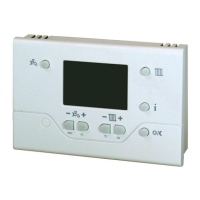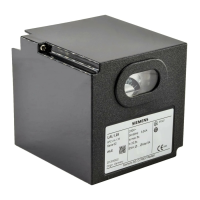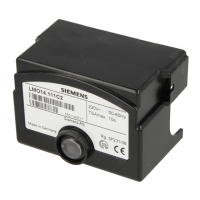SD39RIO-1 CIRCUIT DESCRIPTION
January 2001
4-1
4.0 Circuit Description
The Remote I/O Rack contains no active circuitry. It provides a passive backplane that contains various
components, some of which are listed here:
• Rack Address switch (SW1) enables setting a unique rack address (1 to 16).
• Slot Address range switch (SW2)
• Module Connectors (J1 to J4) mate with an I/O module’s P1 connector for access to DC operating power
and IOBUS communication signals.
• A and B IOBUS IN and OUT connectors and screw terminals provide for the connection of the IOBUS
rack-to-rack cables.
• A, B, and C (P1, P26, and P3) DC power supply connectors provide for the connection of external DC
operating power to the installed I/O modules.
• IOBUS Shunt (W4) continues the IOBUS to another rack or terminates IOBUS in its characteristic
impedance.
• OK Loop jumpers (W1 to W3) preserve the continuity of the OK Loop signal when an I/O module is not
installed at that particular slot.
4.1 Communications
A redundant serial communication bus is employed on the Remote I/O Rack’s backplane. This is the IOBUS,
which runs at 1 Mbps and uses a single line with a clock encoded data signal.
The IOBUS uses a differential line transceiver system where transceivers located in I/O modules are
connected to these buses. Additionally, the IOBUS is isolated by 1:1 isolation transformers located in each
module that connects to IOBUS.
4.2 IOBUS Signals
Redundancy signals are functional in a node-to-node (rack-to-rack) redundant system. These signals are
constantly monitored the control module located on the IOBUS to determine if a switchover to the redundant
system should occur. Redundancy signals are not applicable to non-redundant systems.
The IOBUS is comprised of the following signals:
• IOBUS A+/A- and IOBUS B+/B- These differential pairs carry the communications between the
control module and its associated I/O modules. They are bused across the Remote I/O Rack’s backplane
and continue through the IOBUS Shunt (I/O Bus Continue position) and connect to the IOBUS A/B
IN/OUT connectors or screw terminals located at each end of the rack’s backplane.
• MEN (Master Enable) This redundancy signal line is bused across the backplane and continues
through the IOBUS Shunt (I/O Bus Continue) and connects to the IOBUS A/B IN/OUT connectors and
screw terminals. The MEN line is terminated when an IOBUS Shunt is in the “I/O Bus Terminate”
position. The control module sources this signal with an FET tied to +5V. I/O modules place an opto-
